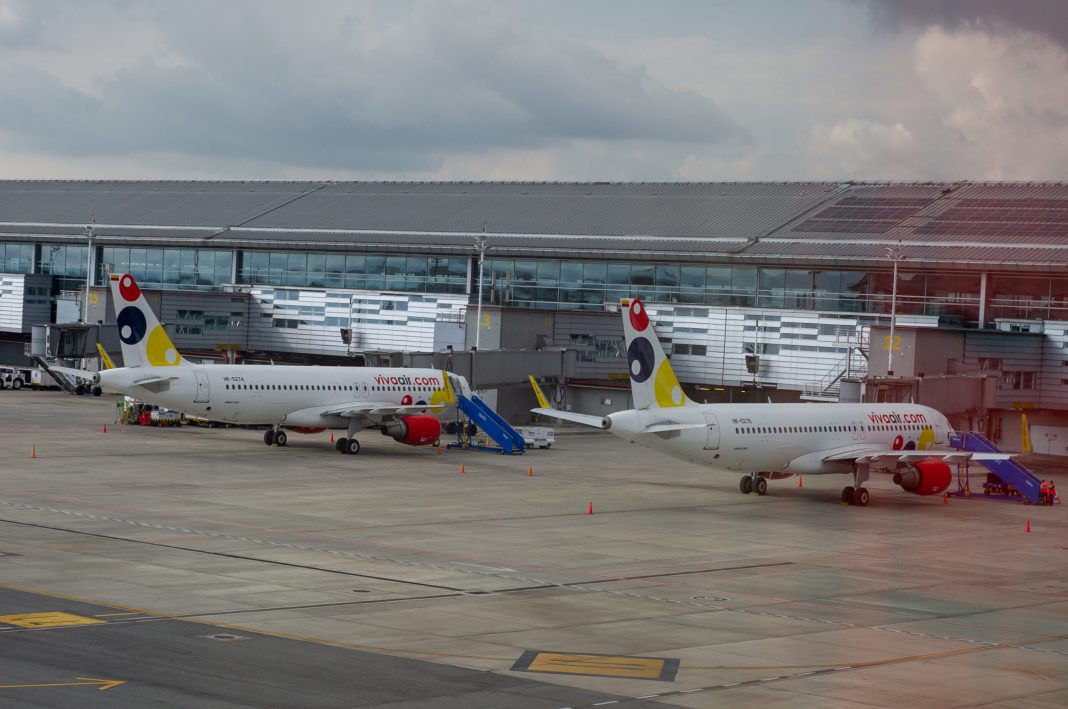In Latin America, the low-cost (LCC) and ultra-low-cost (ULCC) movements are in full swing. Now, more than ever, low-cost carriers in the region seem to be taking off faster than legacy airlines.

This tendency is leaving traditional companies like Aeromexico, LATAM, and Avianca in a tricky position. They have to switch from their historical services to a new one, better suited up for current events.
What’s going on?
The low-cost model is relatively recent in Latin America. It entered the market with some carriers like Volaris and Viva Aerobus in the mid-2000s in Mexico.
In Colombia, Viva Air appeared just a few years ago, while in Chile, there are two low-cost carriers in Sky Airline and JetSMART.
All of these airlines seem to be disrupting the traditional legacy model in the region. They are bringing down the domestic airfares and putting pressure on historical carriers, which have had to adopt newer strategies. For instance, Aeromexico changed its baggage rules, dropping the checked baggage for basic and classic fares.
According to Felix Antelo, Viva Air’s CEO, every airline in Latin America is adopting the LCC model to some extent.
In an interview with CAPA, Antelo said,
“The legacy carriers (in Latin America) and others like Azul and GOL in Brazil and some carriers in Argentina are transforming their models for the short-haul domestic and regional markets. The LCC and ULCC models are a winner here. I’m absolutely convinced about that.”

Latin America, a fertile ground for low-cost carriers
Legacy or full-service carriers long held the monopoly of the market in Latin America. Due to most Latin American societies’ economic constraints, many people couldn’t afford to travel by plane in the region.
Even before the pandemic, most Latin American countries averaged less than one air trip per capita every year. Flying here used to be expensive, due to many reasons including lack of infrastructure, and lack of competitiveness and offer.
But in the last few years, this has changed. Due to several circumstances, countries in Latin America have opened up their airspaces for new airlines with innovative strategies.
Therefore, low-cost carriers have come and become a booming model in the last few years. Now, the COVID-19 pandemic is showing the world that the low-cost model was better prepared for a crisis like the one we’re currently living in.
In Mexico, Volaris and Viva Aerobus are surging, with capacity levels already back at 100%. Meanwhile, Aeromexico is struggling to keep pace, and it is under a Chapter 11 reorganization.
In Colombia, Avianca is also under a Chapter 11 reorganization. Moreover, the country expects to have two low-cost carriers by this time next year. Viva Air will have a head-to-head competition with Ultra Air.
Chile’s two low-cost airlines are also seizing the market that LATAM is leaving behind due to its bankruptcy process in the US. We see similar trends in other countries like Peru, and even Brazil, even though Azul and GOL aren’t your traditional low-cost carriers. Argentina is the only country that seems to go backward on this trend.

Will legacy airlines drop their traditional model?
So, the real question is whether legacy airlines will go into a full low-cost model. We don’t think so.
As Felix Antelo said, they are transforming their domestic models as much as possible, but there are some limitations as to how far they can go.
Domestically, legacy carriers will continue shifting their offers and dropping their fares. We could also expect them to up-gauge their domestic fleets to increase yields while keeping costs down. There’s already a trend in this sense, with Aeromexico getting rid of its Embraer E170 fleet.
But internationally, legacy carriers in Latin America will maintain their status, especially in long-haul flights.
Do you think the low-cost model is a success in Latin America? Let us know in the comments.
[ad_2]
Source link


